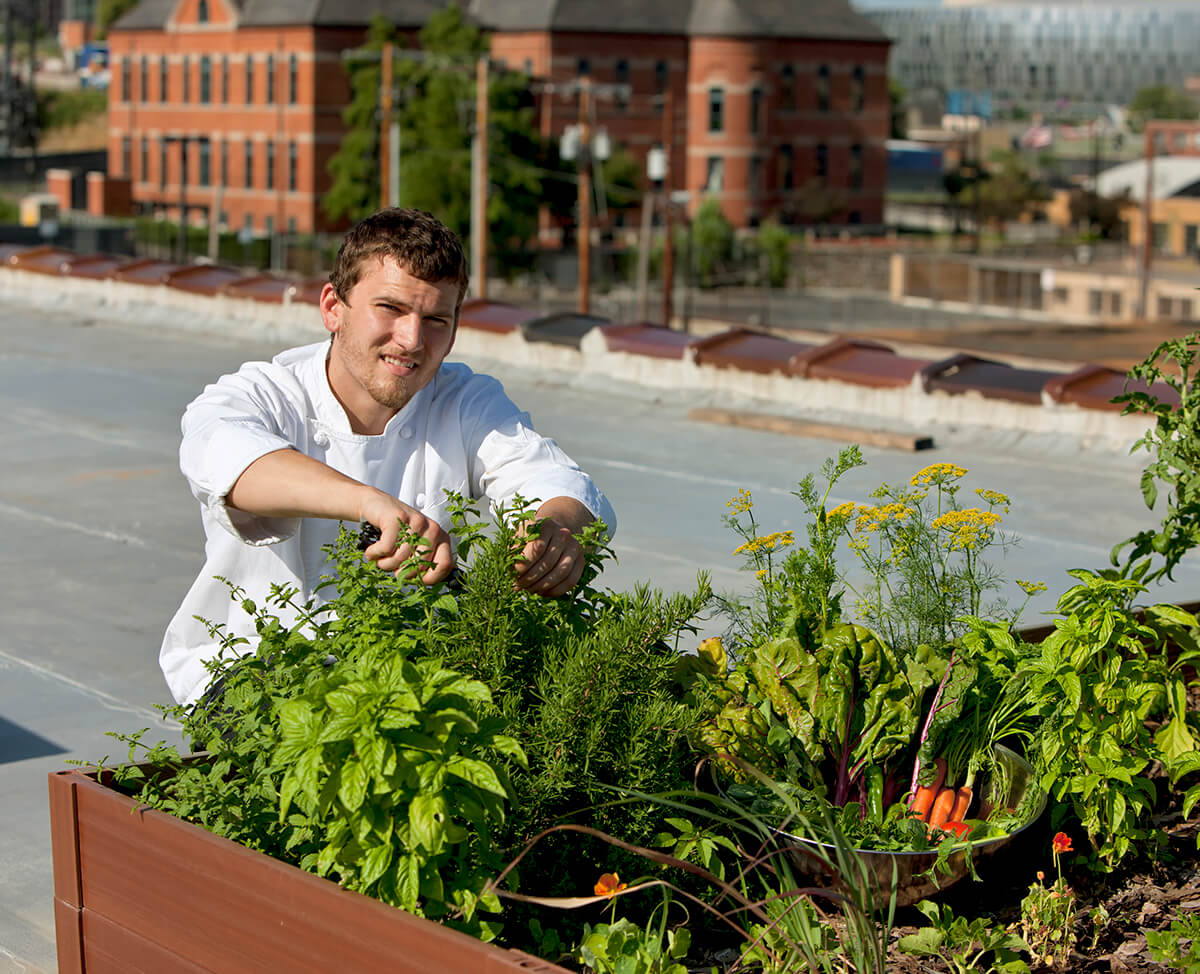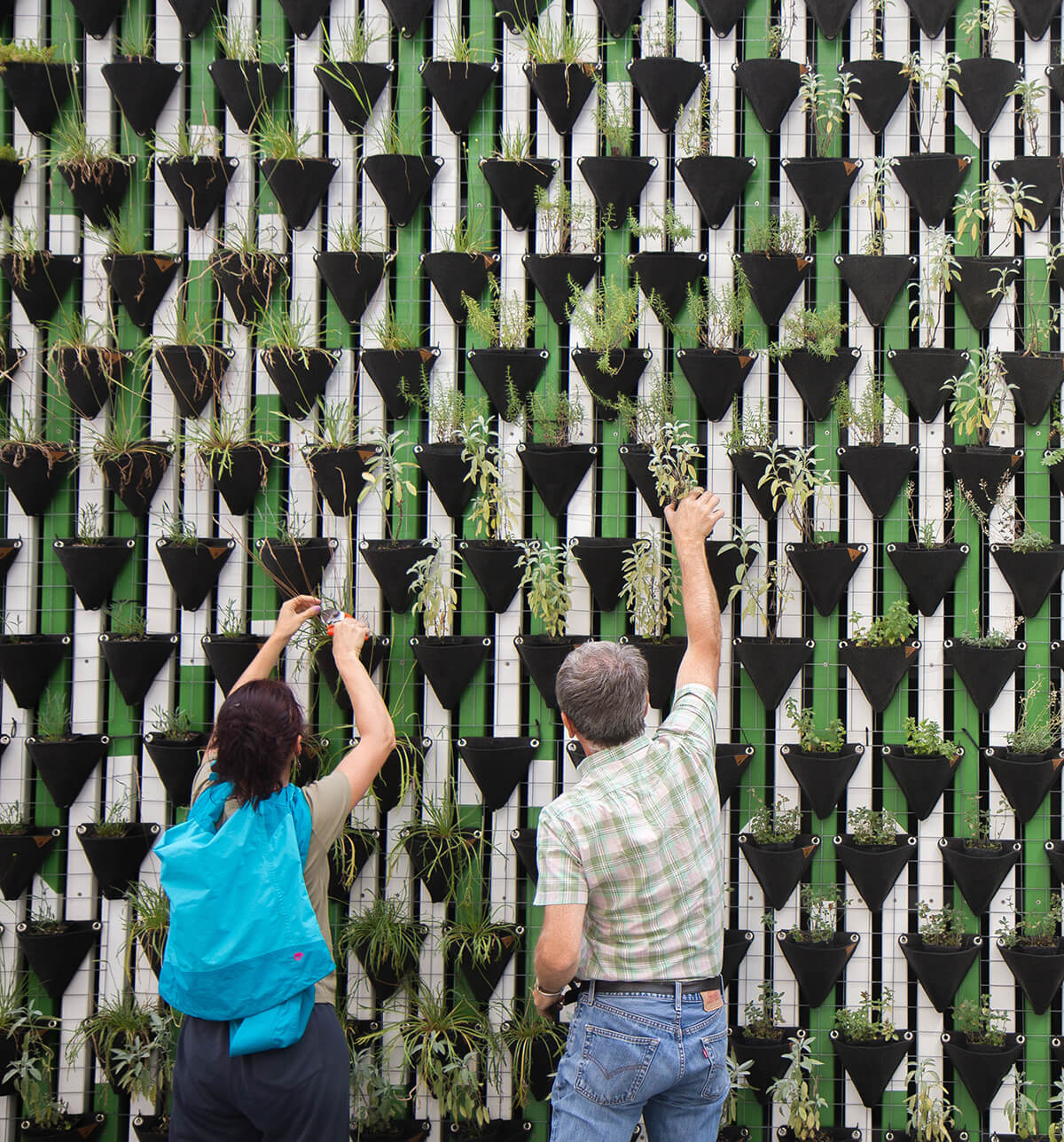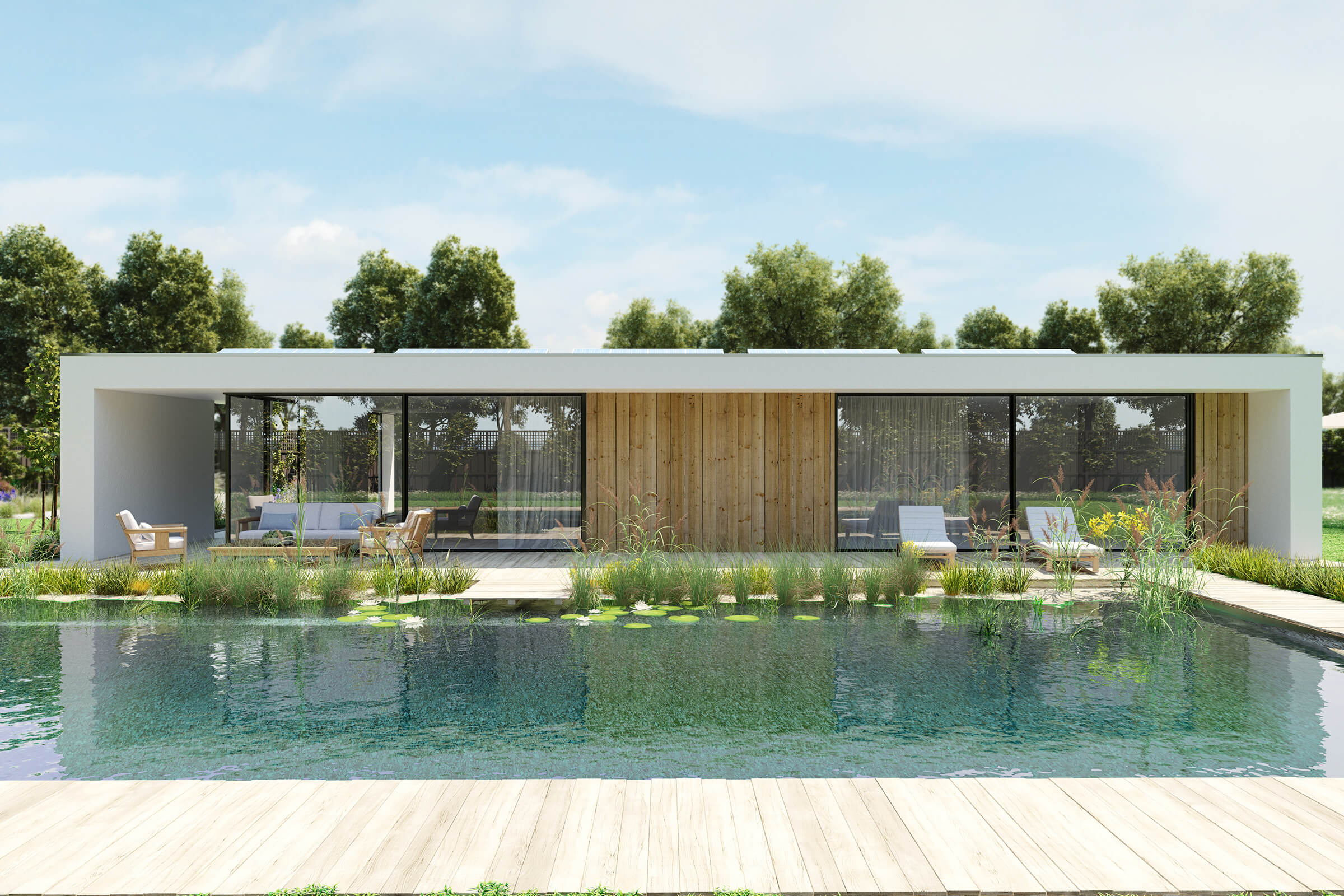
At Ground Up we prefer to use ‘abundance’ over sustainability. Our landscapes design is to increase the vitality of environments and contribute to creating more “green” spaces” and species habitats in city areas.
The ‘abundant’ garden is more about principles for intelligent design – centred on recycling and using renewable resources, accommodating biodiversity and conservation, and adopting an organic approach to gardening. This does not translate to rustic or compromised landscape design. Sharp and elegant designs translate into renewable material such as timber from certified plantation and sophisticated planting schemes. Ground Up provides clients with the option of using local materials are used wherever possible reducing the landscapes footprint and giving a local identity.
Our clients’ are offered alternatives for pest management and fertilisers to support local species increase biodiversity and provide safe living spaces for people and pets. Ground Up uses a combination of local and exotic species as these help to attract beneficial insects and wildlife as long as they are not invasive.
With the shifting nature of our climate, it is important to use plants that are resilient to change. Luxury landscapes are being redefined. Swimming pools are being made low chemical and the latest in luxe living is your very own frog habitat or your vertical organic garden.
Biophilic design responds to this innate need to connect with nature by integrating greenery into built environments” Medibank Place, a corporate headquarters in Melbourne’s Docklands is an example of a employer that has chosen nature to be is included to improve employee wellbeing. Some 70% of employees reported that they felt healthier and 66% felt more productive. The plants, both inside the building and in the courtyard areas, provide a positive connection to nature and this is the key to our sense of wellbeing.
Hospitals that heal
The world over hospitals are realising the benefits of nature to heal. Renowned public health researcher and Australian of the Year (2003) Professor Fiona Stanley from the Fiona Stanley Hospital in Murdoch Western Australia believes the natural environment promotes healing. It was with this in mind that AU$21 million was invested in the gardens’ landscape design. The 2014 large construction project incorporates buildings, bushland, a rooftop garden and courtyard gardens into a unified complex, with 2100 trees and 160,000 shrubs planted in the 32 hectare site.
Natalie Bush was the landscape architect who helped design the gardens. Her design factored in key aspects, such as access to outdoor spaces and views of green and living things from all the wards. She was also mindful of planting a biodiverse landscape and creating a civic place. The results speak for themselves with people using the space like their local park, and rehabilitation often happening outside, getting ‘sunshine therapy’.
The spaces are often contemplative and alive with birds as well as flowers, and every window can see out into the garden, which is important for those that are not able to go outside themselves. Even the Intensive Care Unit has an outdoor experience for the very sick patients, so they can come out and get some sun. Here privacy is paramount so that patients feel protected in their vulnerable state. Masses of rocks have been craned up to the rooftop garden and mounds of different coloured gravels and foliage plants are used to create interest. The ward towers look down onto this site creating a visually exciting garden to be explored from the windows and helping reduce their stress.

